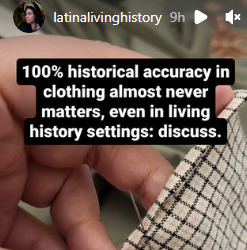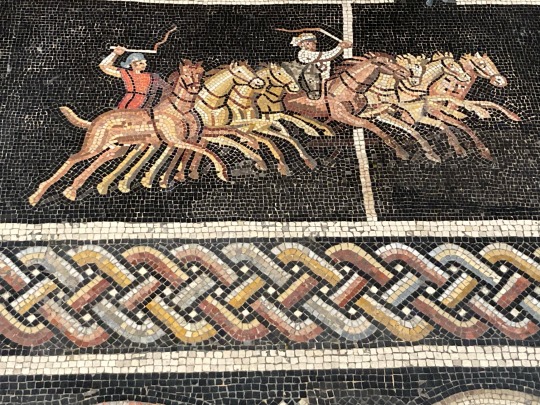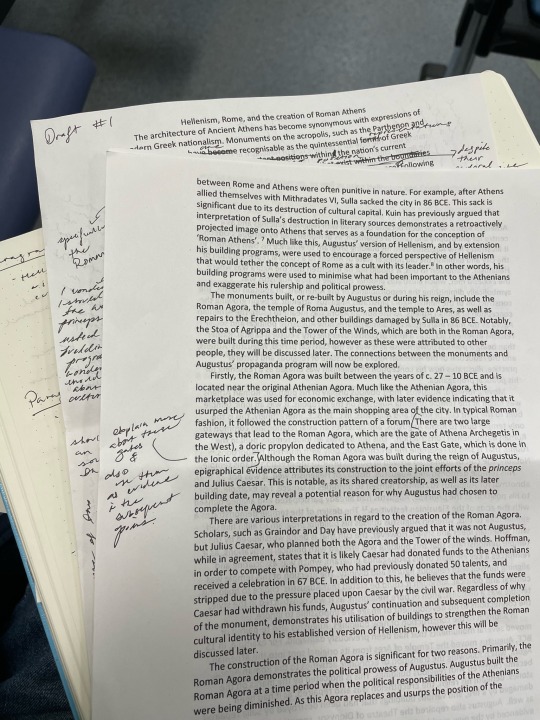#material culture
Explore tagged Tumblr posts
Text


Colonizer Classics, 2024
Glass seed beads, beeswax, nylon
#they’re life sized btw#I quit smoking so I looked up the size of a king sized Canadian classic#contemporary artist#I can’t believe this is my job#art#contemporary art#indigenous contemporary art#Métis art#indigenous art#art gallery#cigarettes#sculpture#beadwork#material culture#my work#artist#indigenous artist#michif#Métis#bead#seed beads
394 notes
·
View notes
Text

202 notes
·
View notes
Text


Am i a 10th century baddie yet?
After four years of having my viking clothes mostly done, i've finally been made to finish them. My basics were all done back then, but this is more of a fancy summery fit that took a lot more work (especially the weaving)
Dress is based on the Vangsnes pleated dress, it's a super thin wool dyed with madder (the colour is a little uneven sadly)
Woven band is from a similar grave to vangsnes, but in Køstrup, because the vangsnes band is all swastikas
My brooches are NOT historical but just what i have rn :(
Half the beads are made by me, the other half were bought. it might be a bit much ngl but i felt very fancy
#viking age#living history#historical sewing#historical fashion#reenactment#material culture#tablet weaving#iron age
130 notes
·
View notes
Text
A curse that comes with Knowing History, and harbouring a particular interest in material culture, is that you can never watch a documentary, film, or series without paying attention to the tiniest details, which will inevitably ruin your viewing impression.
Watching a documentary about Louis XIV for Reasons, one of the scenes recreated by actors is the last illness of the Grand Dauphin, seen here drinking a fortifying bouillon from what would not be the type of bowl used in these circumstances in the early 18th century. That would likely have been an ��cuelle (a specific soup bowl that often featured a lid which could be converted into a plate), not this thing:

Thankfully, Monsieur le Dauphin here tilts his bowl of bouillon enough to allow a peek underrneath:

That is no 18th century porcelain mark. That is a modern Seltmann-Weiden mark, likely second half of the 20th century, possibly pre- German Reunification:

I put a couple of filters over the image to make the mark slightly more visible. Image of the reference Seltmann-Weiden mark found here.
For all ye who want the really very absolutely authentic soup bowls in use at Château de Meudon in the time of the Grand Dauphin, you will have to look for second-hand or new old stock options because Seltmann-Weiden has discontinued the Theresia/Heimatland series some time ago, but they are definitively still around, presumably because the Grand Dauphin's household, having been dissolved after his death, has flooded the second hand market with Seltmann-Weiden crockery:

I will leave whoever was in charge of the props that though: the Grand Dauphin was married to Maria Anna Victoria of Bavaria, and Seltmann-Weiden is a Bavarian firm, so if this was an intentional decision, I have to say it is a nice touch. Blue and white porcelain was much en vogue then, but this here pattern reminds me a tad too much of Meissen's iconic Zwiebelmuster, which was only created in 1730, 19 years after the Grand Dauphin's death. I get that it is not economically feasible to procure authentic surviving 18th century porcelain for filming a few scenes for a documentary. But still. This choice of soup bowl is not as historically informed as it could have been.
TL;DR: I beg you, never watch anything remotely historically-themed with me.
68 notes
·
View notes
Text

I have a lot of opinions on this but I would love to know what other people think.
#sewing#living history#historical costuming#history#historical reenactment#historical accuracy#historically accurate#historically adequate#historical sewing#museums#material culture#experimental archaeology
352 notes
·
View notes
Note
Great blog, I hope you reach your goals with it. I got curious, you do alot with nordic pre-history for a wide enough audience. What's your niechest nerd subject/angle in of it? I'd love to read it!
Dear anon,
I basically wrote my Master’s thesis about cheese. Medieval Icelandic cheese.
More specifically, I used a stolen piece of cheese to argue that women weaponized the ordinary objects of their domain to perform masculinity (i.e. activity avenging honor through extra-legal feuding) to the woe of men (i.e. ‘enlightened’ saga authors of the 13th century) who sought to move society away from those old practices.
But yeah, it was basically about cheese.
And women wearing pants. And women making shirts that showed too much man nipple.
It’s free to read and linked above, but I think you’ll need an Academia.edu account? Which is also free. I kept my thesis relatively concise (~50 pages), so I don’t think it’s too dense or difficult.
I like ordinary objects. Golden rings and magical swords are cool, but I like farmers feuding over cheese just as much. I also wrote an article about cloaks (“Cloak and Dapper”) for another blog, Spells & Spaceships. If podcasts are your thing, I’ve also yapped about Norse material culture on the History, Eh? Podcast.
I want to do more work from this angle. I think it’s’ neat and surprisingly rewarding!
Many thanks for asking, friend.
— ᚠᛁᛅᚱᚾ
22 notes
·
View notes
Text

Roman mosaic from the Lyon Lugdunum museum
136 notes
·
View notes
Text

Gazelle Palette
Egypt, Predynastic Period, Nagada II, 3650-3300 BCE
Siltstone, H 8.6 cm (3 3/8 in.)
on display at RISD Museum 14.489
#animals in art#museum visit#ancient art#Egyptian art#palette#stone#slitstone#carving#sculpture#gazelle#African animals#RISD Museum#material culture
40 notes
·
View notes
Text

“Beautifully written and illustrated, Novels, Needleworks, and Empire unearths an incredible array of handicrafts that will forever change the ways we think about gender, race, and empire in the Atlantic world—a must-read for anyone interested in the material cultures of the long eighteenth century.”
36 notes
·
View notes
Text


went to a starbies to work on my essay with a. few friends (don’t mind how bad it is — it’s my “shit draft!”), and then did some more work on the go.
#studyblr#classics#classics major#latin#study inspo#academia#dark academia#classics studyblr#latin translation#the secret history#ovid's metamorphoses#roman athens#archaeology#architecture#material culture#ancient athens#studying#study blog#study aesthetic#classics aesthetic#classics student
166 notes
·
View notes
Text
I cannot state enough, if you are a writer and focus on colonial North America. One of the best resources to understand some of the daily life and material culture (things people interacted with) is James Deetz: In Small Things Forgotten. While yes it has a historical archaeology basis, I've learned so much about dining utensils, dining habits, gravestones and their meanings, and so much more.
#for my historical writers#it's easy to find for free and download#18th century#colonial history#material culture
9 notes
·
View notes
Text

south central alaskan cup and saucer basketry (via university of alaska museum of the north)
#queued#archaeology#art#textile art#basketry#basket weaving#weaving#alaskan art#indigenous art#material culture
10 notes
·
View notes
Text
Our choice of the "history of things" is more than a euphemism to replace the bristling ugliness of "material culture." This term is used by anthropologists to distinguish ideas, or "mental culture," from artifacts. But the "history of things" is intended to reunite ideas and objects under the rubric of visual forms: the term includes both artifacts and works of art, both replicas and unique examples, both tools and expressions—in short all materials worked by human hands under the guidance of connected ideas developed in temporal sequence. From all these things a shape in time emerges. A visible portrait of the collective identity, whether tribe, class, or nation, comes into being. This self-image reflected in things is a guide and a point of reference to the group for the future, and it eventually becomes the portrait given to posterity.
George Kubler, The Shape of Time: Remarks on the History of Things
#quote#George Kubler#Kubler#history#time#history of things#culture#anthropology#art history#materialism#material culture#art#The Shape of Time
27 notes
·
View notes
Text
Last night/this morning I was being grumpy about "survivorship bias" arguments re: historical material culture, and in order to stop being grumpy about it, I promised myself I'd write a post.
The concept is based on a famous anecdote about analysis of military planes in WWII. Analysts were looking at the planes that returned with damage and assuming that the damaged areas needed more armor until they realized that actually, the undamaged areas on those planes were the issue as the planes getting hit there were simply not coming back. So the idea is that if you're making judgement calls based on what survives, you are inherently missing what failed to survive and therefore your judgement may be off.
When this comes up in topics like old houses, antique clothing, furniture, sewing machines, etc. the very very clear subtext of a dismissal on the basis of survivorship bias is "you fucking idiot and probable right-winger, you inherently have only a superficial knowledge of the past, and my logic defeats both your personal opinion and your reasoned argument." This isn't entirely fair of me, as I've seen knowledgeable people make the point as well, but typically it comes as a smug discussion-ender from people who know relatively little about the topic in much the same way some use other named fallacies on the internet.
Survivorship bias makes sense when it comes to downed planes. It makes less sense when it comes to material culture. Why? Because the idea that only the best material culture survives is bullshit.
Sure. Yes. Wedding dresses tend to get saved more than everyday dresses. The best silver and china tends to get put away in a cupboard rather than used to bits. Mahogany furniture has been cared for better than deal (cheap softwood). If you attend a museum exhibition, yes, you will tend to see the Best Stuff put on display, and Victorian mansions tend to get put on historic registers.
But!! There is sufficient of the everyday stuff still extant for scholars and researchers to have a pretty good idea of the norm. Most of it is being sold in small antique shops around the world, but there's also a lot in museums - held in the collections storage and not brought out for shows because it's not "nice enough", except in local historical societies where the collection may largely be this kind of thing. There are plenty of bottom-range houses built before 1950 still around, although they might not be obvious at first glance to a layman because they're often covered in vinyl.
If someone is waxing lyrical about how weren't people so much more refined and elegant back then, yadda yadda yadda, sure, point out that their idea of the past is likely more about fiction and/or the upper and middle classes. If someone is talking about how plastic, polyester, and particle board are not great materials and how things made before they were common hold up better, or how things used to be deliberately made to allow for repair/alteration rather than replacement, though, stop giving them shit for it.
#history#material culture#sewing machines that have plastic parts inside are worse than sewing machines that are all metal#regardless of whether the metal machine is top of the line or bottom of it#you can rehab pretty much any treadle machine no matter how rusty it is
19 notes
·
View notes
Text

#shadow archive#the shadow archive#material culture#LACMA#museums with walls#the invisible college#palace of green porcelain#20th Century#artifacts#anthropology#ethnography#Kirin
13 notes
·
View notes
Text

Today's Nano-lame-o (day 10) art is: pots.
31 notes
·
View notes